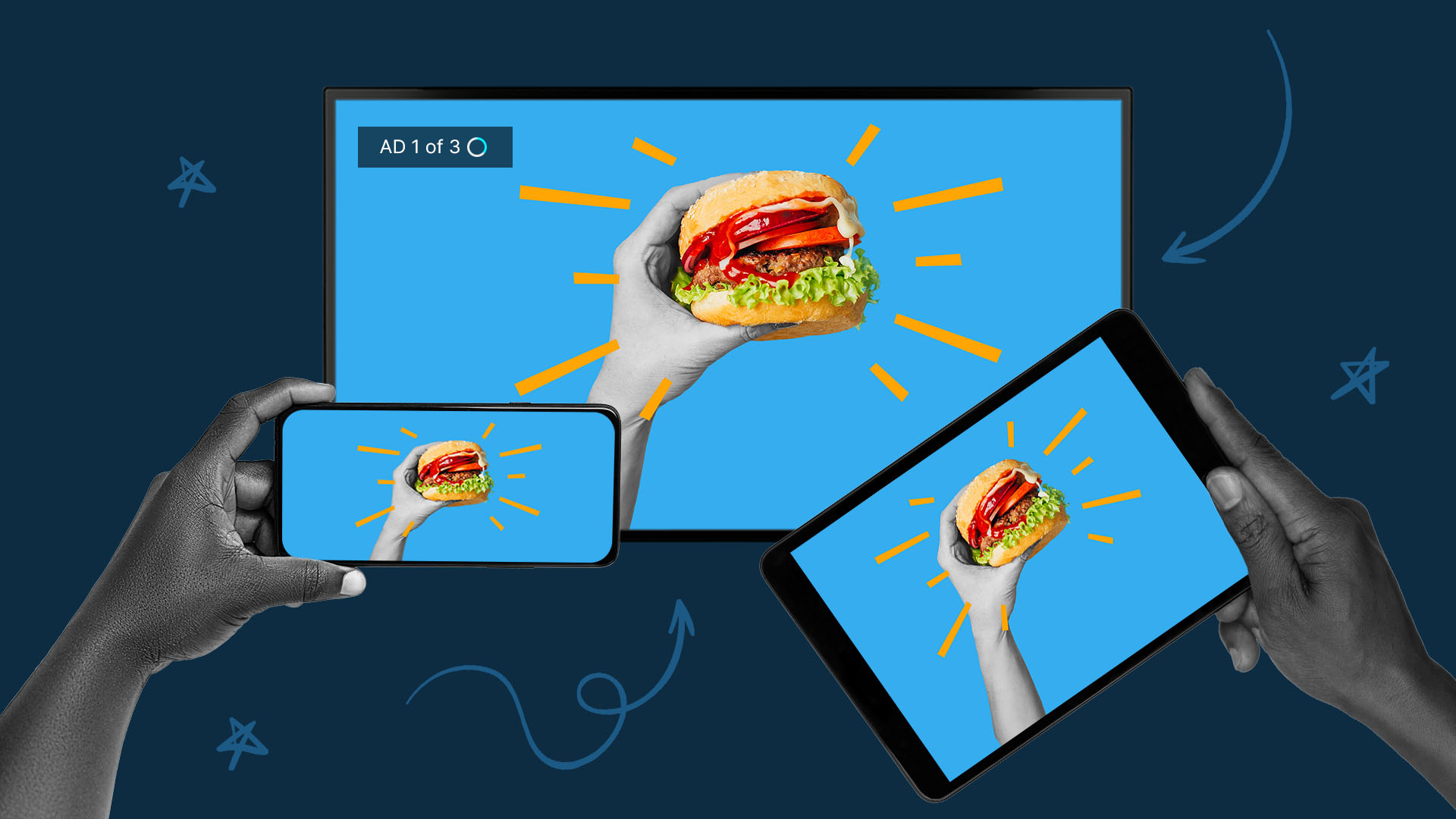How iOS14 Data Privacy Updates Impact Mobile Gaming

This blog discusses the data privacy changes in Apple’s iOS14 updates, how they affect the mobile gaming industry, and what your brand can do about it.
When video games first became popular over 40 years ago, they were mainly seen as a young person’s, well, game! From arcades to home consoles, these games were marketed directly towards younger audiences as they were the ones, at the time, who played them the most. Video games were considered more of a children’s toy, rather than universal content that can be enjoyed by all ages.
Today, over 65% of adults play video games. If the gaming industry’s growth over the last decade wasn’t readily apparent before 2020, the COVID-19 pandemic accelerated the expected trends. While other industries had to significantly downsize as everyone stayed indoors, the gaming world grew by 12%, from $120.1 billion in 2019 to $139.9 billion in 2020, according to a market research report from SuperData.
FREE DOWNLOAD: The Marketer’s Handbook to Data Privacy Regulations
A contributing factor to this growth is the increase in mobile gaming users over the past year. In 2020, users spent 284 billion hours playing mobile games, a 35% increase from 2019. Bidstack, a UK programmatic advertiser for the gaming industry found their user base increased by 300% when the UK first went into lockdown. In 2020, consumers spent $112 billion on iOS and Google Play downloads, with $81 billion of that figure coming exclusively from games.
But the SuperData report also mentions that the gaming industry isn’t predicted to sustain this level of growth over the coming years. Different determinants, including the world’s reopening into the “next normal”, are impacting this decreased growth, but the most tenuous factor is how the loss of granular targeting with Apple’s updates to iOS14 will impact mobile gaming brands’ ability to acquire and retain users.
Game developers are bracing for impact, but within these data privacy challenges exist marketing opportunities! We’ll take you through what the iOS14 updates entail, how they impact mobile gaming, as well as some actionable solutions on how you can continue to find your target gamers in the evolving ecosystem of data privacy.
iOS14 Data Privacy Updates and Mobile Gaming: The Overview
iOS14 Data Privacy Updates and Mobile Gaming: The Solutions
iOS14 Data Privacy Updates and Mobile Gaming: Testing Strategies
iOS14 Data Privacy Updates and Mobile Gaming: The Takeaway
iOS14 Data Privacy Updates and Mobile Gaming: The Overview
Background
The initial iOS14 update hosted a number of improvements to Apple’s gaming experience, but the data privacy updates of iOS14.5 that went live in April 2021 wield the heaviest impact. Namely, the update requires Apple’s 1.5 billion active device users to opt-in to sharing their personalized data.
Their feature, called App Tracking Transparency, will require user authorization before any app can collect data that is then shared with other companies for purposes of tracking across apps and websites. In past versions of iOS, users had to manually opt-out of data tracking and sharing, but this new feature will make opting-in the default.
What this means is that whenever someone uses an app on iOS14, they will have to give the developer express permission to access their IDFA, or Apple’s Identifier for Advertisers. What the IDFA does is track a user’s activity across different apps on a person’s iPhone. If, for example, an in-game ad compels a user to click on a video to visit a developer’s website, the IDFA would keep track of that user’s data so marketers can better target the user for future engagement on a different platform.
Implications for Mobile Gaming
For advertisers, this means that the granularity you’re used to is going away. This change will be especially felt by the mobile gaming industry, which uses hyper granular targeting to drive downloads and conversions. Without access to the gameplay data that has traditionally been collected, like how long a game is played and how much money is spent in-app, it will be more difficult for developers to serve targeted ads for their games on other platforms. Consequently, it will be harder for non-gaming advertisers to serve ads related to gamer’s interests.
Game developers also won’t be able to attribute specific actions taken in-app to individual users. Not only are you unlikely to know whether an ad is reaching someone for the first time, or the fiftieth, you also won’t know what they do after seeing an ad. Is it immediately converting into an app download? Did it coerce users to visit a website? These nuanced metrics will be effectively lost as users opt-out of tracking on their favorite games.
Perhaps most importantly for developers, iOS14’s data restrictions will make it harder to monetize ads on larger ad platforms like Facebook, which has traditionally been a boon for smaller gaming studios. This just means that developers will need to relinquish their focus on individual users and refocus on aggregate data based on larger cohorts of gamers, the direction many platforms are already heading to retain tracking capabilities in a privacy-friendly way.
iOS14 Data Privacy Updates and Mobile Gaming: The Solutions
The marketing and advertising world is scrambling to find solutions for this evolving data privacy ecosystem. If you are a mobile game developer, you can wait and see how tracking alternatives like the SKAdNetwork will shake out, but with popular browsers like Firefox and Safari already planning on blocking third-party solutions like Google’s FLoC, you may be waiting for quite some time.
One immediate solution you can take is to use historical demographic data of specific games to craft ad creative targeted to those audiences. For example, if you are advertising a puzzle game, you could serve ads to audience demographics that have traditionally been found within that gaming subgenre.
Similarly, if your game is based on an established IP, whether in or outside of the gaming world, you may have a unique avenue to organic user acquisition. The inherent popularity of big name brands from Marvel and Nintendo to Nickelodeon means they have their own dedicated fanbase who are more willing to check out your game because it features characters they already love.
Learn More: Social Media Video Ad Specs & Placements Guide
This ad created with QuickFrame by Krusty Cook Off, a new puzzle game based on the popular Nickelodeon character Spongebob Squarepants, uses an instantly recognizable name to entice casual gamers.
Another option is to turn your attention to Android devices. It goes without saying that Android users will not be affected by Apple’s data privacy changes. While Android does have a similar IDFA tracking feature, they also have significantly lower opt-out rates of 2-3% when compared to Apples’ rates of 30% and higher.
All this means is that you shouldn’t wait for an end-all-be-all solution to targeting limitations. You must be proactive in your approach to crafting relevant ads to your target audience. You can do this by refocusing your attention on performance marketing and broad creative testing.
Ozan Daldal, monetization expert at Coda predicts, “By not using an established identifier such as an IDFA, brand marketing may slow down significantly. On the other hand, performance marketing should be able to increase its volume as the inventory of the publisher is expected to grow continuously.”
In the same hand as broad creative testing, you’ll also want to leverage contextual advertising methods. Rather than trying to serve ads to individual users based on past browsing activity, focus instead on specific contextual information, like the game being played, what country it’s being played from, or even what motivates users when they play a game. For instance, if your top down strategy game is focused on a user collecting a lot of in-game loot, you can serve your ads on games that inspire a similar motivation.
iOS14 Data Privacy Updates and Mobile Gaming: Testing Strategies
A contextual ad strategy is only as successful as the multivariate testing plan you launch it with. Not only can an iterable testing plan support your creative experimentation, but it turns your strategic approach from trial and error into methodical testing, zeroing-in on the creative variables that work best for your brand.
STRATEGIZE: Multivariate Testing in 7 Steps
Here are a few key tips to get the most of a testing plan within the gaming industry.
Identify Goals and Historical Learnings
Start by identifying your goals and collect any historical learning you have. Having a robust understanding of your brand’s historical performance ensures that you’re not starting from scratch when structuring your testing plan. Another way you can surface historical learnings is by looking at demographic data on competitor games and studios, or generational data about changing consumer habits in gaming over the past decade.
Conceptualize Your Video Creative
You want to then identify several concepts and creative attributes that you’ll methodically test during your video content marketing campaign. With less individual targeting, rather than focusing on the actions you want the user to take, home-in on the mood and tone you want your ad to convey. You can do this by testing different elements that historically perform best in the gaming arena. Those can include:
- Simulated Vs. Gameplay Graphics: Do you want to show your audience in-game footage, or express the fun, exciting tone of your game through animation?
- On-screen Talent vs. Animated Characters: Do you want to feature relatable, human talent or dynamic animated characters to convey your games style?
- POV vs Third-Person Talent Perspective: Do you want your audience to visualize themselves playing the game, or see relatable talent playing the game in a manner that is familiar to them?
- Play Now vs Follow Us CTA Copy: What CTA you use will be vitally important with decreased attribution capabilities. Even if you don’t know exact individual metrics, ask yourself what action you still want the viewer to take, like downloading the app or following a social media account.
This dynamic animated ad created in partnership with QuickFrame for the popular mobile strategy game Clash of Clans offers gamers a cinematic interpretation of what they’ll experience when playing.
Test Broadly
Once you’ve identified those creative variables, it’s time to shoot! Use your concepts to build an exhaustive shot list in pre-production so you can capture all the necessary footage in one shoot.
Afterwards, edit together your first set of creatives and launch your testing campaign. Test broadly so you can identify the creative variables that resonate the most with your target audience, and iterate on them.
For example, you can get an idea of how successful your tone and pace is by testing different video lengths. Longer in-app video ads may be less welcome to the gaming community than a shorter interstitial video before gameplay begins. Testing different creative variables like this will help you optimize your current campaign, and provide audience learnings to carry into your next one.
These two examples from Candy Crush Saga created in partnership with QuickFrame illustrate two separate creative approaches, one focused on animation, and the other with on-screen talent, to give users a feel for the game’s tone.
Animated characters quickly convey to audiences the colorful look and feel of a game.
On-screen talent allows audiences to easily visualize themselves playing a game.
If this all sounds expensive, it really doesn’t have to be. At QuickFrame, we strategically plan out a testing approach, so you learn who your customer is and what motivates them based on the creative variables that perform best. We do this for every platform and without blowing your budget.
iOS14 Data Privacy Updates and Mobile Gaming: The Takeaway
After 2020 it should be no surprise that mobile gaming has become a major player in the content arena. The lack of other leisurely escapes meant that we relied more on digital entertainment to keep us preoccupied during a world-changing event. As the Wired Shopper states, “Gaming is now the biggest revenue contributor in the entertainment industry, dwarfing the contribution of traditional behemoths like film and music.”
This growth is set to take a significant hit with the data privacy rolling out across platforms, but that doesn’t mean all is lost. Refocusing your approach away from individual targeting to contextual advertising will benefit developers looking to continue increasing engagement and growing brand awareness.
Game developers will have new challenges in the coming years, but with a refined focus on your video creative, and a broader approach to finding your target audience, you’ll be able to ride this new wave of changes as the data privacy ecosystem continues to evolve.
We’ve made it possible for you to achieve fast, affordable, and successful video content–at scale, and on budget. It’s not too good to be true – it’s just how we do business. Let’s talk about what we can do for yours.
Do More with Video
Learn how we can help you produce more quality videos affordably and at scale.



